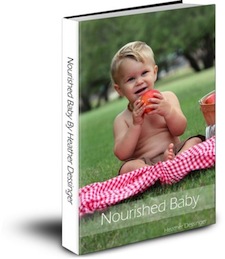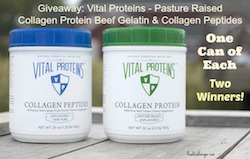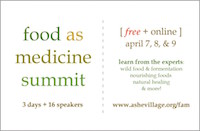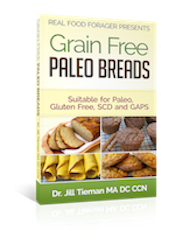
Every one knows which foods a baby should start eating at about 6 months. Right? The doctors and nutritionists, the parenting educators and authors of books and magazine articles all agree — the first foods should be pureed fruits and vegetables and then rice cereal. It’s common knowledge. Most babies seem to do well with this approach, so what’s the problem? Actually there are quite a few problems that you should know about.
The critical nutrients are the fat soluble vitamins A and D
Dr. Weston Price studied many traditional peoples who ate a wide variety of foods that were particular to each culture. However, all these various diets had something in common: they all had sacred foods that were especially intended for young married couples getting ready to conceive. The sacred foods were also meant for pregnant women, babies and children. The wisdom here is that these particular foods imparted super nutrient dense substances that were crucial for having a healthy pregnancy and a healthy baby.
These traditional cultures all had a common goal and common principles that they lived by. In the interests of survival, their overriding goal was to have healthy and strong babies that could survive their harsh environments.
Sacred foods are rich in fat soluble mineral activators
These revered foods are rich in minerals and extremely high in what Dr, Price called fat soluble activators. Minerals such as calcium, magnesium, phosphorus, iron and iodine are important nutrients. These minerals have many necessary functions towards supporting optimal physical development. Dr. Price did not fully understand what these critical nutrients were when he first began his work. Recent science has uncovered the fact that these mineral activators are actually the animal forms of vitamins A (retinol isomers), D (vitamin D3 and isomers) and K (vitamin K2).
Bricks and Mortar
In her writings and lecture, Sally likes to use the analogy of bricks and mortar,
If we compare the body to a house built of bricks and mortar, think of the minerals as the bricks and fat-soluble activators as the mortar. In other words, we can consume a certain diet of fantastically nutrient-dense foods, but the value of such a diet comes down to what is actually absorbed. Without fat-soluble activator nutrients— namely vitamins A, D3, and K2—our efforts to consume the “right” foods will be futile.
The work of Dr. Weston Price has clearly shown us that ancestral diets had these fat soluble mineral activators in the order of ten times the amounts we get from our diet today. Without this mortar all the minerals are lost or deposited in the soft tissues where they do not belong. For example, calcium may deposit in the joints, in the kidneys as stones, in the heart vessels as atherosclerotic plaques.
Babies are not good at converting beta carotene to vitamin A
While pureed fruits and vegetables may seem to be easier to digest and are supposedly full of easily assimilated vitamins and minerals, in fact, the opposite is true. An infant does not convert the beta carotene, which is found in plant foods, to vitamin A until they are much older, if at all. There are many adults who are also not good converters of beta carotene. In the first year of life, babies grow and mature more than at any other time. In order to do that and do it well, they desperately need fat soluble vitamins in the easiest to assimilate form — as preformed vitamin A (retinol). This is only available from animals products.
Vitamin A is a catalyst on which the numerous biochemical processes of the body depend. According to Dr. Price, protein, minerals and water-soluble vitamins cannot be assimilated by the body without vitamin A from animal sources. Vitamin A also acts as an antioxidant which protects the body against free radical tissue damage, which can lead to degenerative diseases.
This important fat soluble vitamin also stimulates the secretion of gastric juices needed for protein digestion, plays a vital role in building strong bones and rich blood and contributes to the production of RNA.
What foods have the most available vitamins A and D?
These critical vitamins, A and D, are found in butterfat, egg yolks, liver and other organ meats, seafood and fish liver oils. These preformed vitamins are easily assimilated into the body and made available for metabolic reactions.
Provitamin A or carotene is also a powerful antioxidant. It is found colorful plant foods such as yellow, red, orange or dark green fruits and vegetables. However, a chemical reaction is necessary to convert carotenes to vitamin A in the upper intestine.
The body’s requirement for vitamin A cannot be met with beta carotene because many people — particularly infants, children, diabetics and individuals with poor thyroid function cannot make this conversion. Furthermore, studies have shown that our bodies cannot convert carotenes into vitamin A without the presence of fat in the diet.
Synthetic vitamin A from supplements can be toxic, especially to those with impaired liver function and to those with poor diets. High levels of natural vitamin A have no toxic effects, in spite of the medical establishment’s dire warnings to the contrary. Antibiotics, laxatives, fat substitutes and cholesterol lowering drugs all interfere with absorption of this critical nutrient.
How can I get these critical nutrients into my baby?
The answer to this question is twofold. The best source is organ meat like liver. Liver can be pureed into broth or other foods. Organ meats should come from healthy animals raised on pasture.
The second source is soft boiled egg yolk. In traditional cultures, raw egg yolk was babies first food — usually at about 6 months of age. Soft boiled egg yolks are also nutrient dense. The eggs should be the best possible eggs — from a pasture raised chicken.
Of course, if you are not comfortable with feeding your baby soft boiled egg yolks, for fear of salmonella, you should not. As mentioned above, egg yolks should come from chickens that have been raised on pasture. Salmonella usually occurs on the outside of the egg in factory farmed chickens.
Egg yolks may be added to hot broth to cook, then cooled, then offered to baby.
The problem with cereal
Babies are good at digesting proteins and fats. Clearly it is important to support the developing digestive system of a baby with first foods that are close to mother’s milk. As indicated above that would be egg yolks and organ meats, butter and cod liver oil, because of the excellent fats and proteins in these foods. Adding in new foods should be done with caution, keeping aware of any reactions to the new food.
The problem with cereal is that it is made from grains. As you may already know if you have been reading this blog, grains need to be properly prepared in order to increase their digestibility. So strike one against baby cereal is that commercial cereal grains definitely have not been soaked and sprouted.
Strike two is that even soaked and sprouted, grains require enzymes that baby just does not have until they are 24 – 28 months old, much less 4 or 6 months when experts recommend starting baby with rice cereal.
Strike three is that cereal actually impairs absorption of iron and zinc, two essential nutrients for baby.
Worse, offering baby cereal grains at the age ( 4 – 6 months) when their intestines are still permeable, is the perfect storm for allergies and food intolerances to develop.
Do you want more CORRECT information about what first foods to feed your baby?
Heather Dessinger is a Real Foodie who blogs over at Mommypotamus. She has written a book about just these issues plus much much more. Heather is a mom who was really concerned about her own health and the health of her children. She is a researcher who found the Real Food world a good fit.
This book will outline for you just what is appropriate food for baby. Based on the work of Dr. Weston Price, Sally Fallon and Mary Enig and other researchers, this book leads the way to making the transition to real food for baby and family.
It’s really very simple; nothing from a package or box. Homemade food that is perfect for a developing digestive system. Here are just some of the things you will learn:
- How the ACTUAL BIRTH EXPERIENCE can affect a child’s cravings for life
- Why a 2001 study of North American women found that their breast milk did not meet the minimum requirements for many essential nutrients – and how to make sure your baby gets the absolute best at your breast
- How to decode your cravings while nursing
- Why you should skip rice cereal and go for digestion enhancing stews
- What the latest research says on introducing peanuts, eggs and other “allergenic” foods
- Why experts believe purees can lead to overeating
- When children’s “picky” eating habits can actually indicate a serious problem – and how to correct it
- Tips for raising an adventurous eater
Plus 30 baby friendly recipes that the whole family will enjoy!
Click here to view more details
Click here to purchase the book
Use Coupon Code SUPERMAMA and save 20% — through August 31!
Join the giveaway for this book here!
This post is shared at: Whole Foods Wednesday, Sustainable Ways, Allergy Free Wednesday, Mommy Club, Real Food Wednesday, Healthy 2Day, Creative Juice Thursday. Keep It Real, Simple lives Thursday, Pennywise Platter, Freaky Friday, Country Homemaker Hop, Fresh Bites Friday, Friday Food, Foodie Friday. LHITS, Seasonal Celebration, Monday Mania, Barnyard Hop, Meatless Monday, Tasty Tuesday Naptime, Traditional Tuesday
Photo Credit
The owner of this website is a participant in the Amazon Services LLC Associates Program, an affiliate advertising program designed to provide a means for sites to earn advertising fees by advertising and linking to Amazon properties including, but not limited to, amazon.com, endless.com, myhabit.com, smallparts.com, or amazonwireless.com. Disclaimer
Tropical Traditions Gold Label Virgin Coconut Oil

Tropical Traditions Gold Label Coconut Oil is a product I use every day.












{ 3 comments… read them below or add one }
I’m passing this on to my daughter who has a 3 month old baby. Thanks!
Coming from an Italian background one of my first foods was egg and parmesan mixed with pastina. I think we get babies too hooked on sweet foods too. In many European countries vegetables and meats are introduced before fruit. There is also a theory that the rise in food allergies are a result of delaying introduction of eggs, peanuts, etc.
Wow, what a great post. I will be sure to have my daughter read this.
Thank you for sharing.
{ 4 trackbacks }